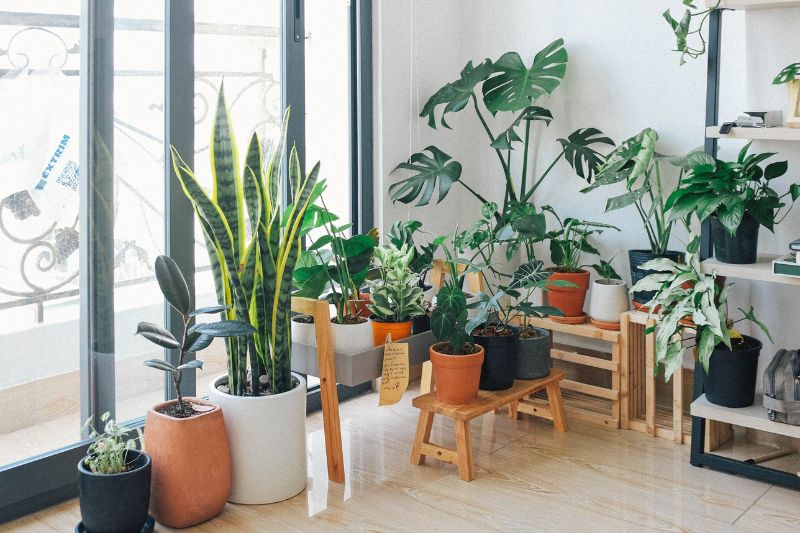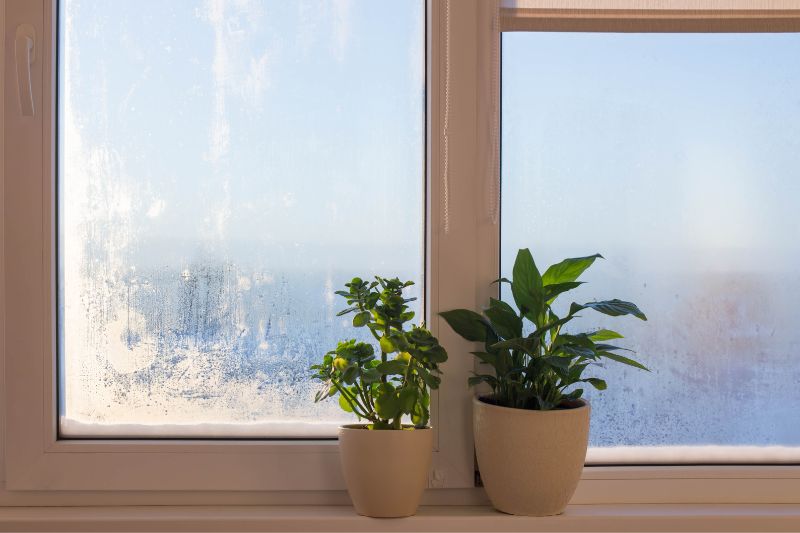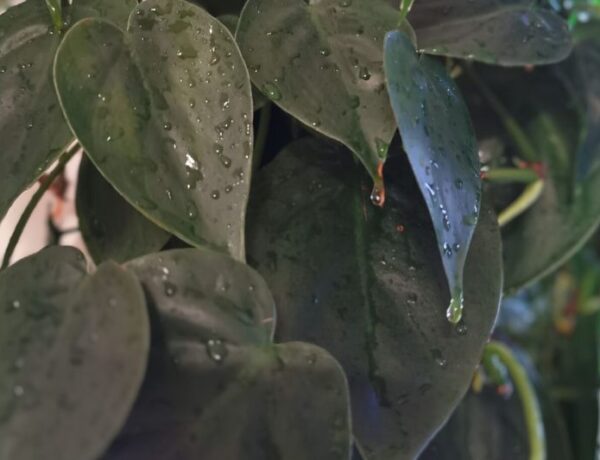As the air turns crisp and the days grow shorter, it’s time to start thinking about how to protect your outdoor plants from the coming cold. Bringing them indoors isn’t just a matter of hauling them inside; it requires planning and execution to ensure they thrive in their new environment.
This guide will walk you through every step of the process, from timing and preparation to care and troubleshooting.
Table of Contents
1. Timing and Selection

1.1 When to Move Your Plants Indoors
- Timing Matters
Timing is important when moving your plants indoors for the winter. Do it too early, and you may deprive them of essential sunlight that help them thrive. On the other hand, if you do it too late, you risk exposing them to frost or colder temperatures that could be harmful.
- Climate Considerations
Your local climate plays a significant role in deciding the right time to move your plants. In temperate climates, the period just before the first frost is generally optimal. However, in regions with sudden temperature drops, it might be better to err on the side of caution and bring plants in a bit earlier.
- Temperature Thresholds
It’s also important to understand that different plants have varying tolerance levels for cold temperatures. However, as a general rule, tropical plants start to feel stress below 50°F (10°C), while hardier plants like succulents may tolerate temperatures as low as 40°F (4°C) without immediate harm. Here’s a breakdown based on plant types:
| Tropical Plants: | Sensitive below 50°F (10°C) |
| Succulents and Cacti: | Sensitive below 40°F (4°C) |
| Herbs: | Sensitive below 45°F (7°C) |
| Ornamental Plants: | Varies widely, but often sensitive below 50°F (10°C) |
Knowing these temperature thresholds can help you decide when it’s time to bring your plants inside. Some modern weather apps even allow you to set temperature alerts, so you can be notified when temperatures are expected to drop below a certain level.
1.2 Identifying Suitable Plants
- Types of Plants
Not all plants are suited for an indoor lifestyle. Tropical plants like peace lilies, snake plants, and various types of palms are usually good candidates. Other plants like succulents and herbs such as basil and mint can also adapt well to indoor conditions.
- Assessing Plant Health
A plant that is already stressed or unhealthy is less likely to make a successful transition indoors. Check for signs of disease or pest infestation and treat these issues before even considering the move.
- Specific Needs
Some plants have specific needs that must be met indoors. For instance, certain tropical plants require higher humidity levels and may need a humidifier to thrive indoors. Others might need special soil or lighting conditions. Be sure you can provide these before making the move.
2. Preparing for the Transition

- Acclimating Your Plants
Begin by gradually introducing your plants to lower light levels and indoor temperatures. You can do this by moving them to a shaded area for a few hours each day and gradually increasing the time over a week or two. This way, your plants will get used to lower levels of natural light.
- Pruning and Trimming
Pruning can help manage your plant’s size and shape before the move. Remove any dead or diseased branches and leaves to encourage new growth and reduce the risk of disease.
- To Repot or Not to Repot
Check if the plant has outgrown its pot or if the soil has deteriorated. If so, repotting may be necessary. Choose a pot that is 1-2 inches larger in diameter than the current one and ensure it has good drainage.
- Pest and Disease Inspection
Inspect the leaves, stems, and soil for signs of pests like aphids or spider mites. Treat any infestations before bringing plants indoors to avoid contaminating your other houseplants.
3. Location and Environmental Factors

- Finding the Perfect Spot
Place your plants in an area that closely mimics their natural habitat. Consider factors like light, temperature, and humidity. Windowsills, sunrooms, or areas near fluorescent light fixtures are often good choices.
- Light Requirements
Different plants have varying light needs, so place them accordingly. South-facing windows provide the most light, while north-facing ones offer the least. You can also use artificial lights to supplement natural light.
- Managing Humidity
Indoor air can be quite dry, especially during winter. Use a humidity tray or room humidifier to maintain optimal moisture levels. Misting the leaves can also help but do it cautiously, as excessive moisture can lead to fungal diseases.
Part 4: Care and Maintenance
- Watering Schedule
Indoor plants generally require less water than they do outdoors. Overwatering can lead to root rot, so it’s better to keep the soil slightly dry. Adjust your watering schedule based on the plant’s needs and the humidity levels in your home.
- Fertilization
Reduce the frequency and amount of fertilizer during the winter months, as most plants will be in a dormant state. Resume regular feeding in the spring when new growth appears.
- Air Circulation
Good air circulation helps prevent diseases and pest infestations. Keep plants away from heating vents and use fans to circulate air if necessary.
- Pest Control
Common indoor pests include spider mites, aphids, and mealybugs. Keep an eye out for these and treat them promptly using insecticides or natural remedies like neem oil.
6. Preparing for the Outdoor Transition
As the weather warms up, reverse the acclimation process to prepare your plants for outdoor living. Start by placing them outside for a few hours each day, gradually increasing the time over a week or two.
Conclusion
Bringing your plants indoors for the colder months can be a rewarding process, ensuring their survival and even flourishing during the winter season. By following these guidelines, you’ll be well-equipped to make the transition as smooth as possible for your leafy friends.






No Comments